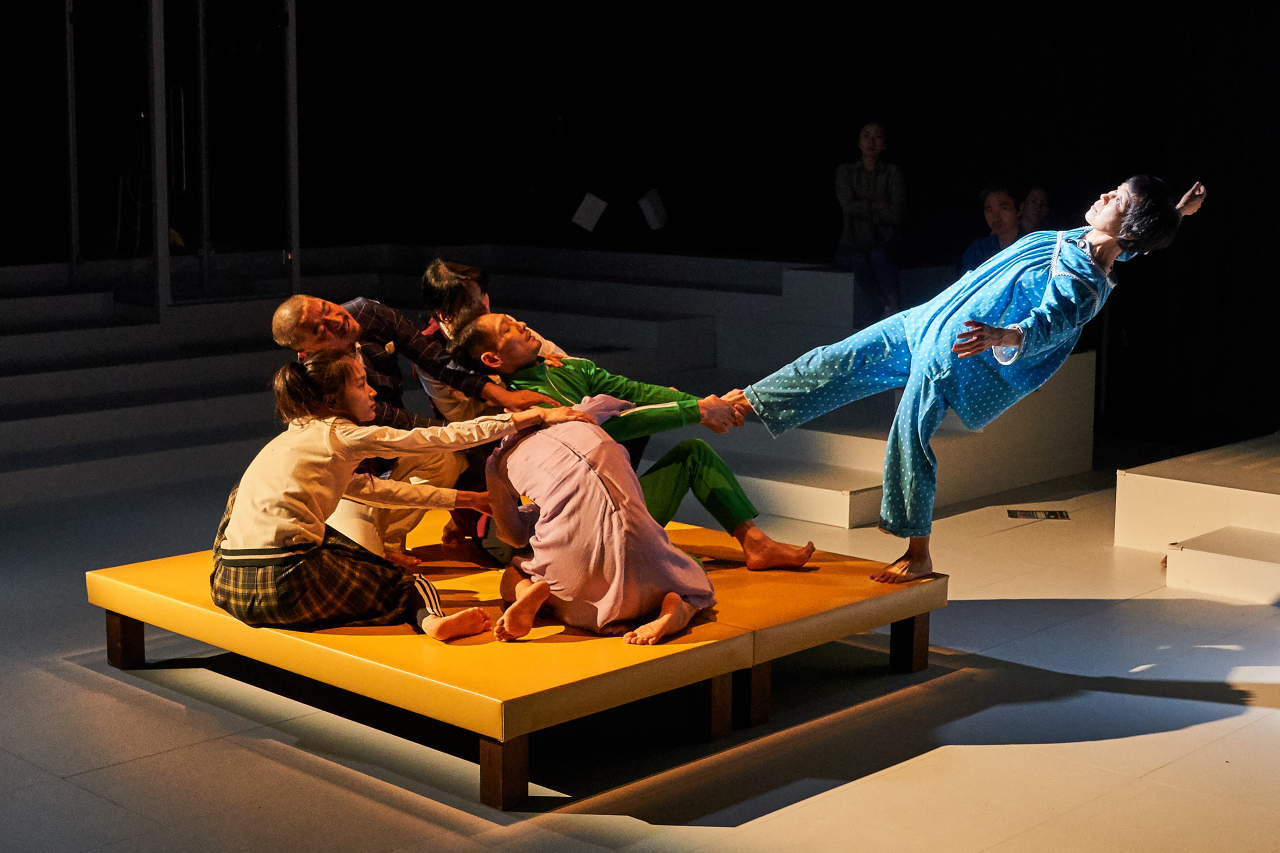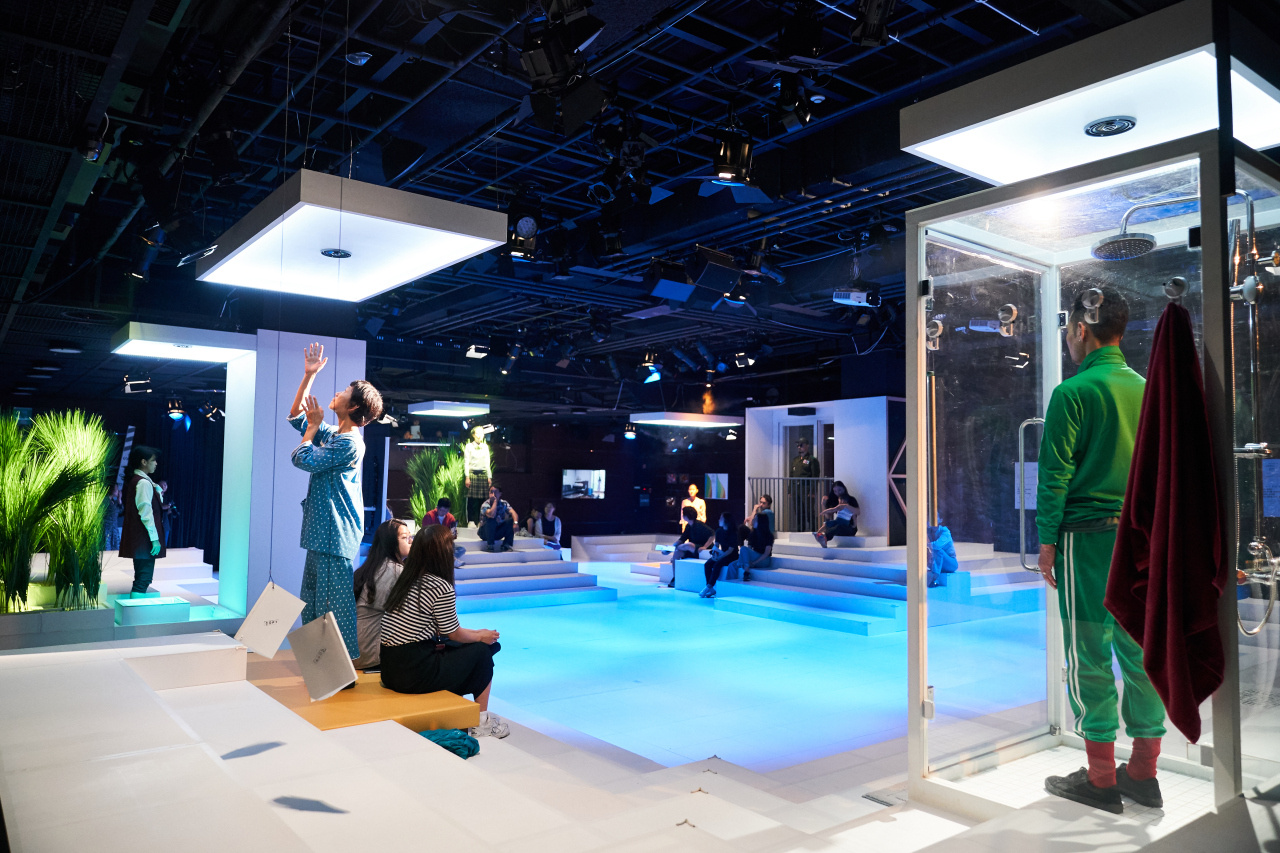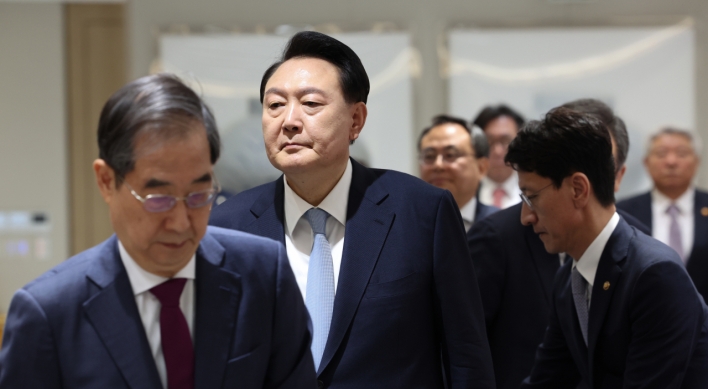Exploring apartments in Korea through art
Doosan Humanities Theater at Doosan Art Center concludes with ‘Post APT,’ a multidisciplinary show
By Shim Woo-hyunPublished : June 23, 2019 - 17:55
From monodrama and contemporary dance performances to interviews and a lecture, Doosan Art Center has tied various art forms to explore apartments in South Korea.
“Post APT,” a multidisciplinary show, recalls the history, issues and stories that associated with apartments to get the audience to reflect on the dominant form of housing here.
“Post APT,” a multidisciplinary show, recalls the history, issues and stories that associated with apartments to get the audience to reflect on the dominant form of housing here.

“Post APT” is co-produced by choreographer Jung Young-doo, architect Chung I-sak, film director Paik Jong-kwan and composer Kayip. It is the last of the three works produced as part of DAC’s annual project Doosan Humanities Theater. This year’s project was titled “Apartment Nation.”
The show invites the audience to a setting designed by Chung 30 minutes before the performance begins. The visitors are supposed to look around the setting that comprises photographs and statistics related to the history of apartment buildings in Korea.
The lights then go out, and the show starts with a contemporary dance piece by Jung.
It features bits of everything -- interviews, dances, monologues, screen work and so on.
Jung’s dance is followed by a performer’s monologue about feng shui, or Chinese geomancy. Another monologue follows, this one related to real estate policies implemented by former authoritarian rulers and President Moon Jae-in, before the show moves on to other performances.
Throughout the show, the audience is welcomed to move around since performances take place at different spots of the setting.
In between, Chung, who built the setting, gives a lecture on the history of apartments in the nation.
He provides a brief history of communal housing, from those of the Roman Empire to those of French architect Le Corbusier and German-American architect Mies van der Rohe, before moving onto discuss how they have been adapted in Korea.
The show invites the audience to a setting designed by Chung 30 minutes before the performance begins. The visitors are supposed to look around the setting that comprises photographs and statistics related to the history of apartment buildings in Korea.
The lights then go out, and the show starts with a contemporary dance piece by Jung.
It features bits of everything -- interviews, dances, monologues, screen work and so on.
Jung’s dance is followed by a performer’s monologue about feng shui, or Chinese geomancy. Another monologue follows, this one related to real estate policies implemented by former authoritarian rulers and President Moon Jae-in, before the show moves on to other performances.
Throughout the show, the audience is welcomed to move around since performances take place at different spots of the setting.
In between, Chung, who built the setting, gives a lecture on the history of apartments in the nation.
He provides a brief history of communal housing, from those of the Roman Empire to those of French architect Le Corbusier and German-American architect Mies van der Rohe, before moving onto discuss how they have been adapted in Korea.

Chung emphasizes that apartments were not a residential option that arose naturally but were a result of external influences. It may now be time to rethink the housing option that is alien to us, he suggests.
Recording of sounds that one might hear through the windows of an apartment unit, such as noises from a nearby construction site, and sounds from the streets, are frequently heard in “Post APT.”
The show utilizes the sounds, which Kayip calls “apartment orchestra,” to help the audience recall their own memories.
The show also includes anecdotes told by apartment dwellers, whose stories may be similar to the audience’s experiences.
The highlight of the show is Jung’s dance work that unfolds on a low wooden platform, with six performers dancing and mingling within the three-square-meter platform.
The square, which offers just enough space for the performers to sit in a circle, represent the city crammed with apartment complexes and the lives of the people barely fit into those.
Against the backdrop of Jung’s performances, the screen shows the same performance filmed by Paik at the demolition site of Gaepo Jugong, which is awaiting redevelopment.
A series of performances follows Jung’s choreography and the show ends with another video by Paik that filmed the rehearsals.
The show runs through July 6 at DAC’s Space111.
By Shim Woo-hyun (ws@heraldcorp.com)








![[KH Explains] How should Korea adjust its trade defenses against Chinese EVs?](http://res.heraldm.com/phpwas/restmb_idxmake.php?idx=644&simg=/content/image/2024/04/15/20240415050562_0.jpg&u=20240415144419)










